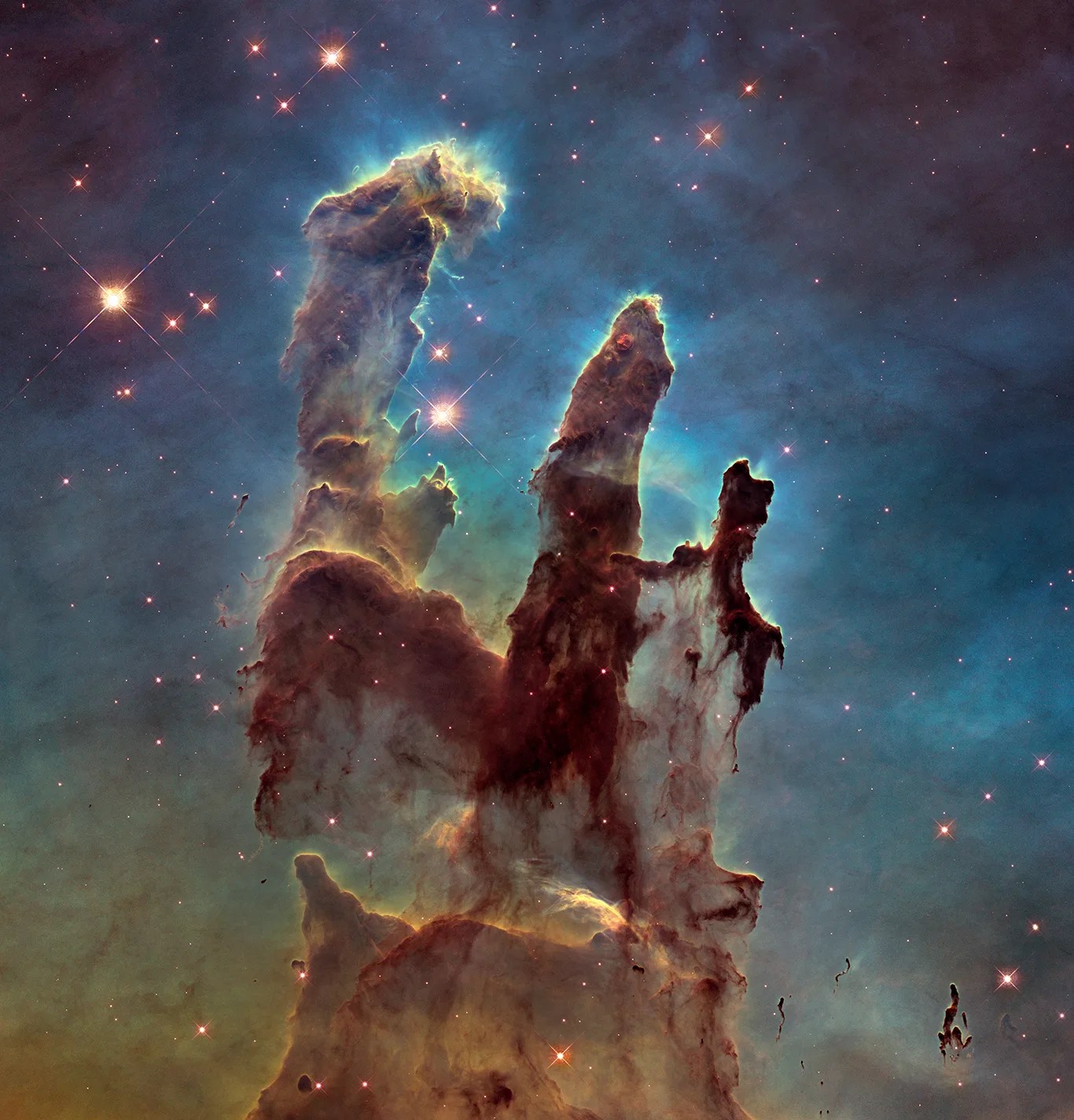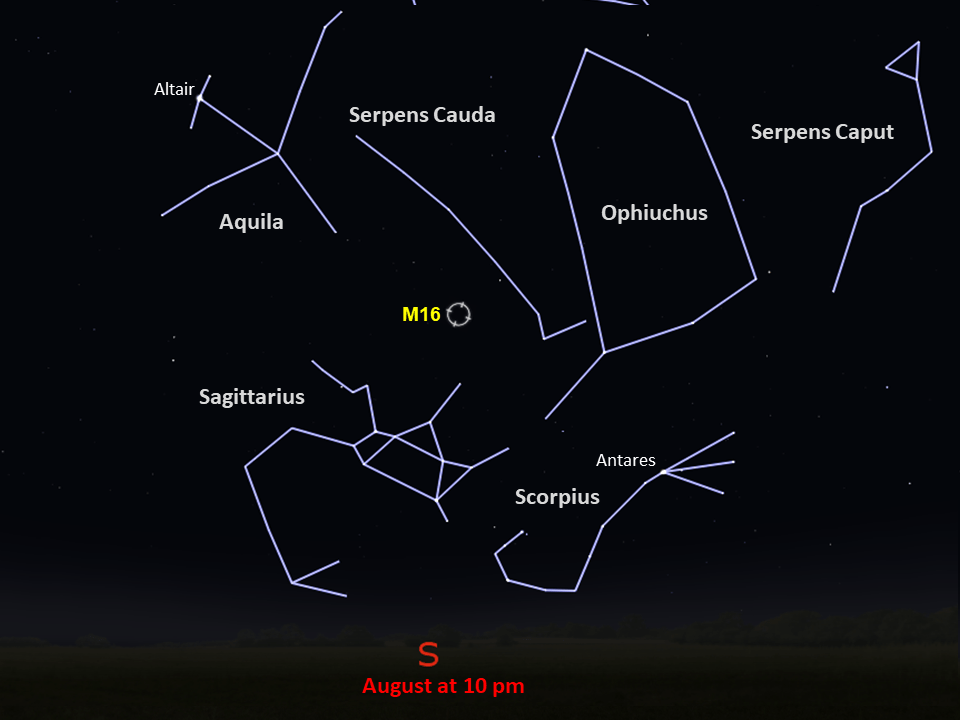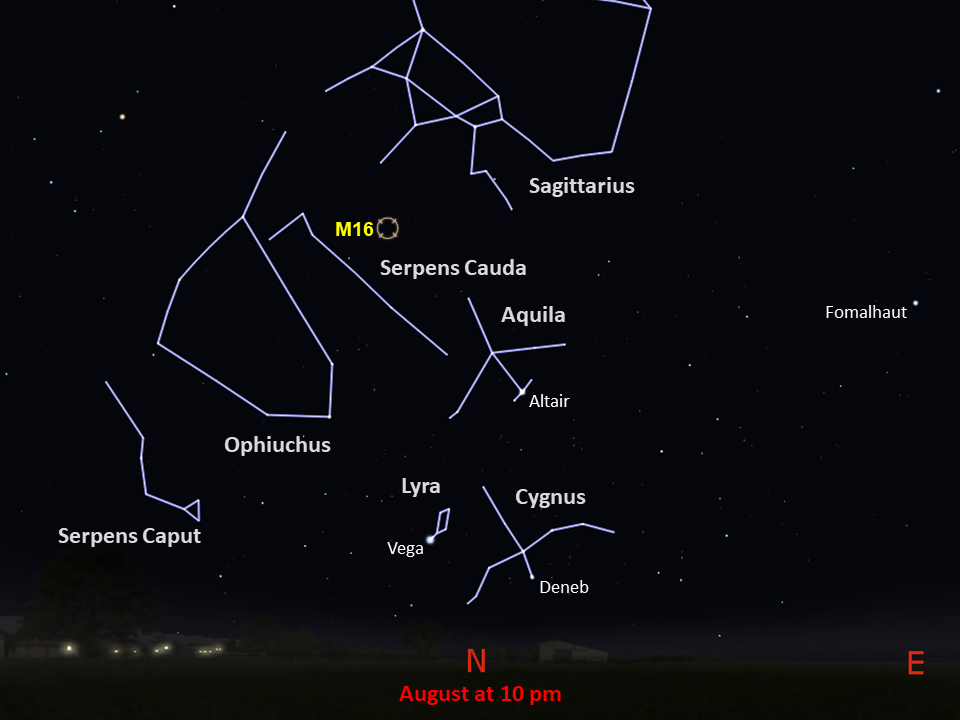Messier 16
Better known as the Eagle Nebula, Messier 16 has provided Hubble with some of its most iconic images.
Distance
7,000 light-years
Apparent Magnitude
6.0
constellation
Serpens
object type
Emission Nebula
These towering tendrils of cosmic dust and gas sit at the heart of Messier 16, or the Eagle Nebula. The aptly named Pillars of Creation, featured in this stunning Hubble image, are part of an active star-forming region within the nebula and hide newborn stars in their wispy columns. M16 is the collective name for two distinct objects that are listed separately in astronomical catalogues: an emission nebula, referred to as IC 4703, and an open star cluster, designated as NGC 6611.
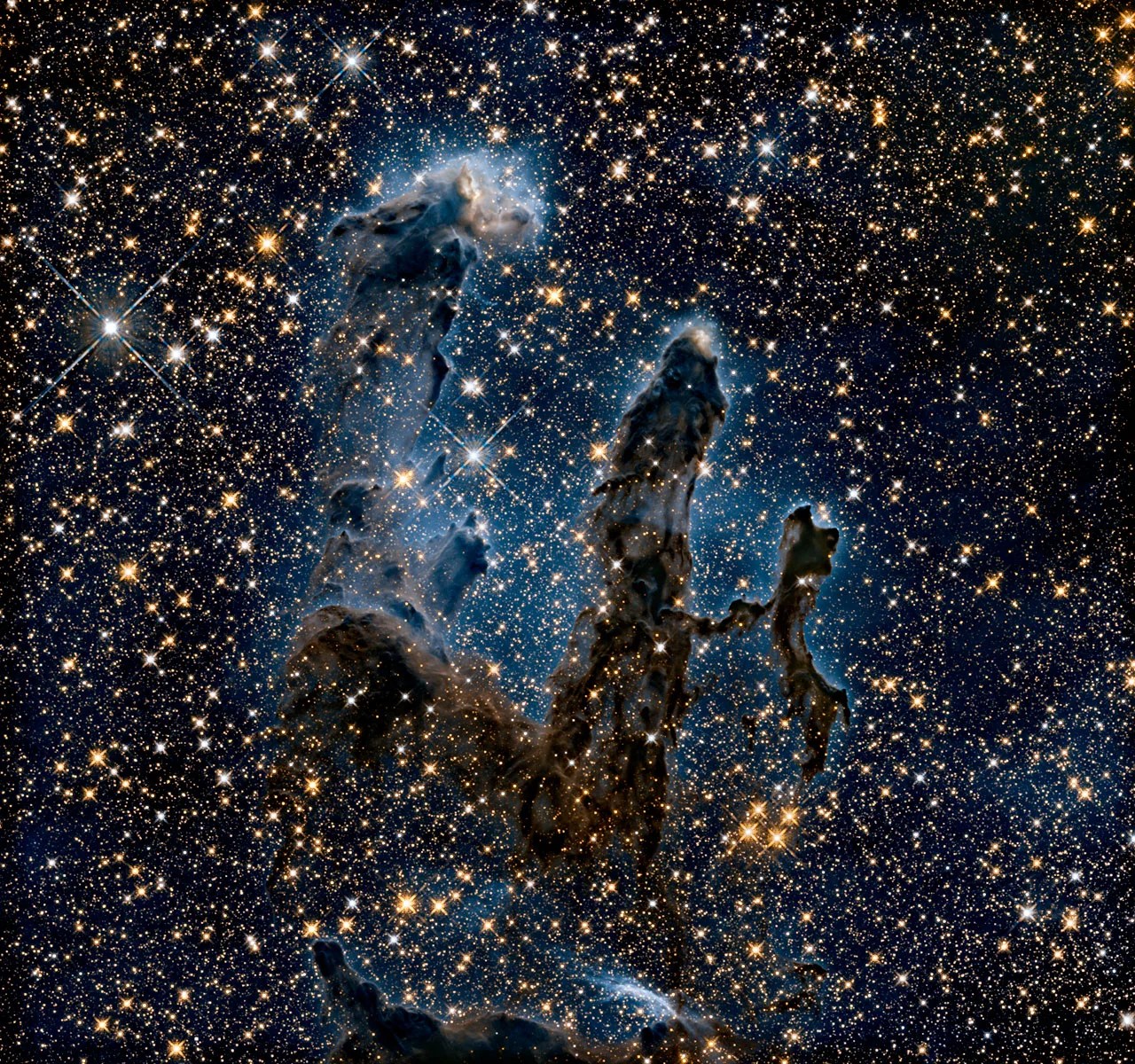
Although this is not Hubble’s first image of this iconic feature of the Eagle Nebula, it is the most detailed. The blue colors in the image represent oxygen, red is sulfur, and green represents both nitrogen and hydrogen. The pillars are bathed in the scorching ultraviolet light from a cluster of young stars located just outside the frame. The winds from these stars are slowly eroding the towers of gas and dust.
Stretching roughly 4 to 5 light-years tall, the Pillars of Creation are a fascinating but relatively small feature of the entire Eagle Nebula, which spans 70 by 55 light-years. The nebula, discovered in 1745 by the Swiss astronomer Jean-Philippe Loys de Chéseaux, is located 7,000 light-years from Earth in the constellation Serpens. With an apparent magnitude of 6, the star cluster in the Eagle Nebula can be spotted through a small telescope and is best viewed during August. However, a large telescope and optimal viewing conditions are necessary to resolve the Pillars of Creation within the nebula.
NASA, ESA, G. Bacon (STScI); Acknowledgment: NASA, ESA, Hubble Heritage Team (STScI/AURA), Digitized Sky Survey ((DSS), STScI/AURA, Palomar/Caltech, UKSTU/AAO), T.A. Rector (NRAO/AUI/NSF, NOAO/AURA/NSF), B.A. Wolpa (NOAO/AURA/NSF), A. Fujii
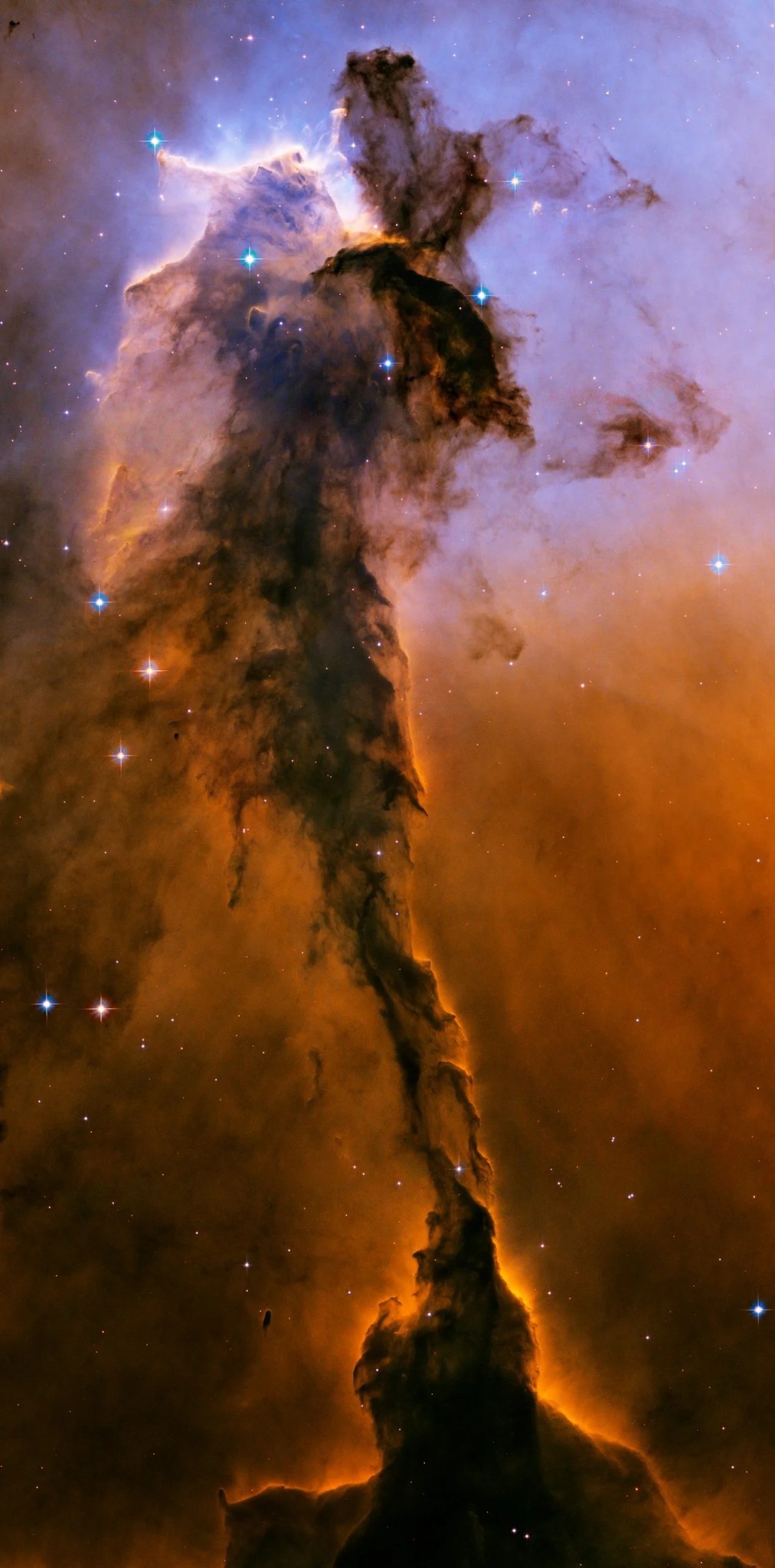
For more information about Hubble’s observations of M16, see:
- Hubble Goes High Def to Revisit the Iconic 'Pillars of Creation'
- Hubble Celebrates 15th Anniversary With Spectacular New Images
- Embryonic Stars Emerge From Interstellar "Eggs"
- Previous: Messier 15 | Next: Messier 17 (Omega Nebula or Swan Nebula)
- Back to Hubble's Messier Catalog
Explore Hubble's Messier Catalog
The following pages contain some of Hubble’s best images of Messier objects.

Overview The Messier catalog, begun by astronomer Charles Messier in the 18th Century and revised over the years, includes some…
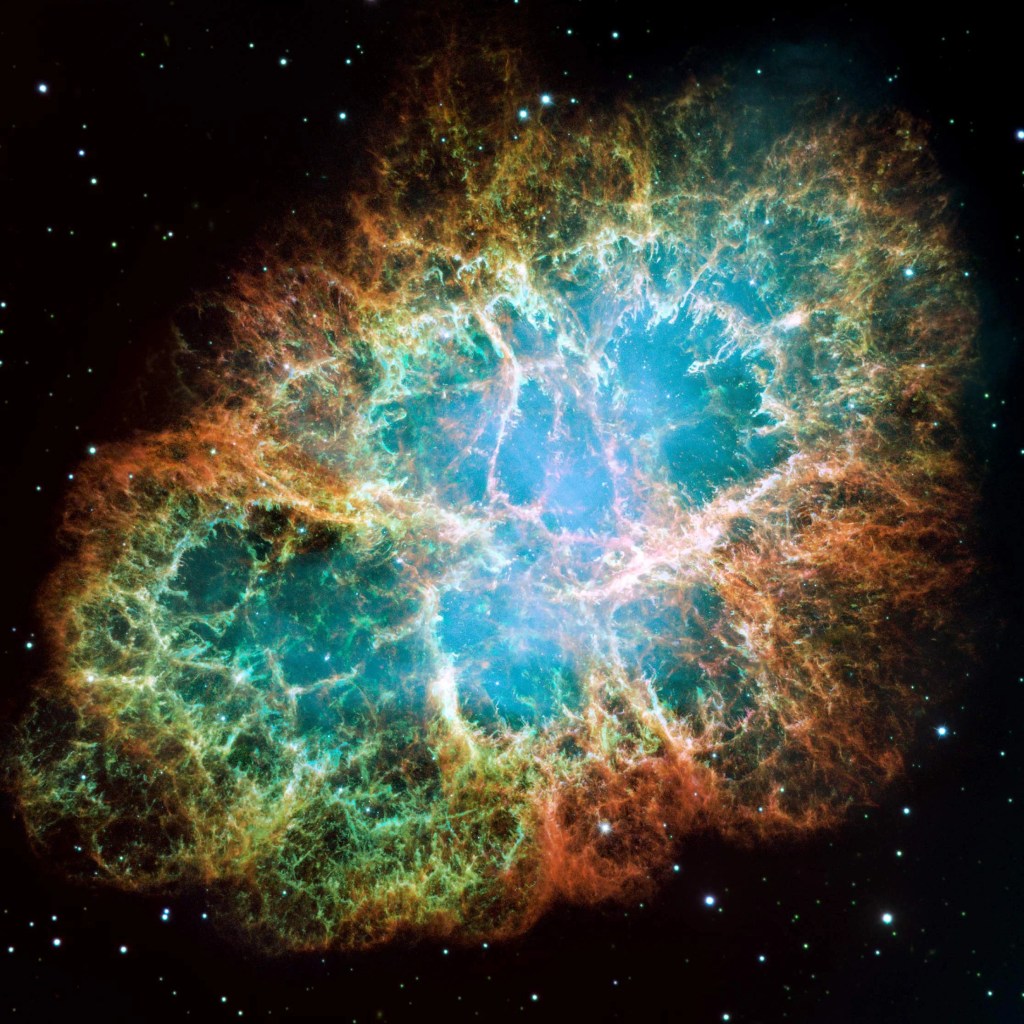
Better known as the Crab Nebula, Charles Messier originally mistook Messier 1 for Halley’s Comet, which inspired him to create…
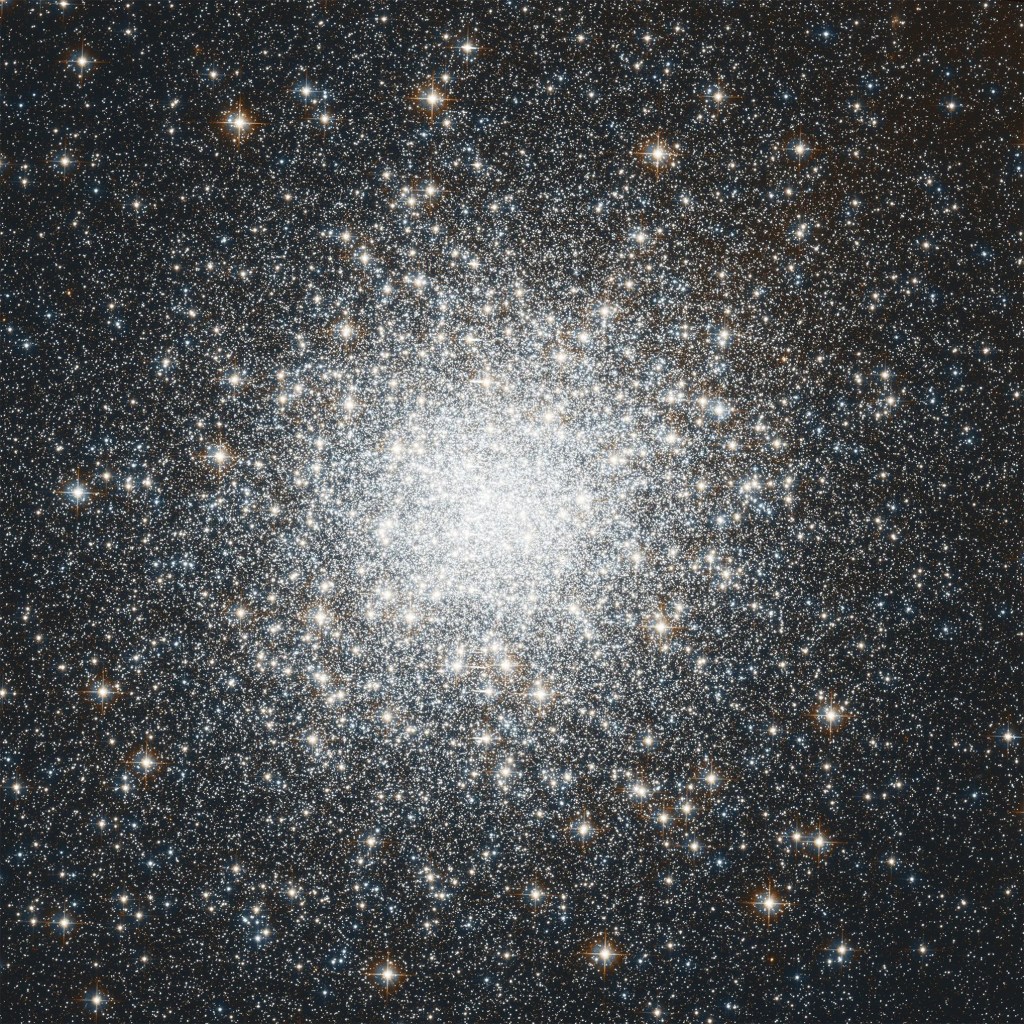
Hubble's image of Messier 2 is comprised of visible and infrared wavelengths of light.




























